What piqued your interest in getting your permit to concealed carry?
Are you freaking out about riots springing up and want to have a fighting chance to defend yourself?
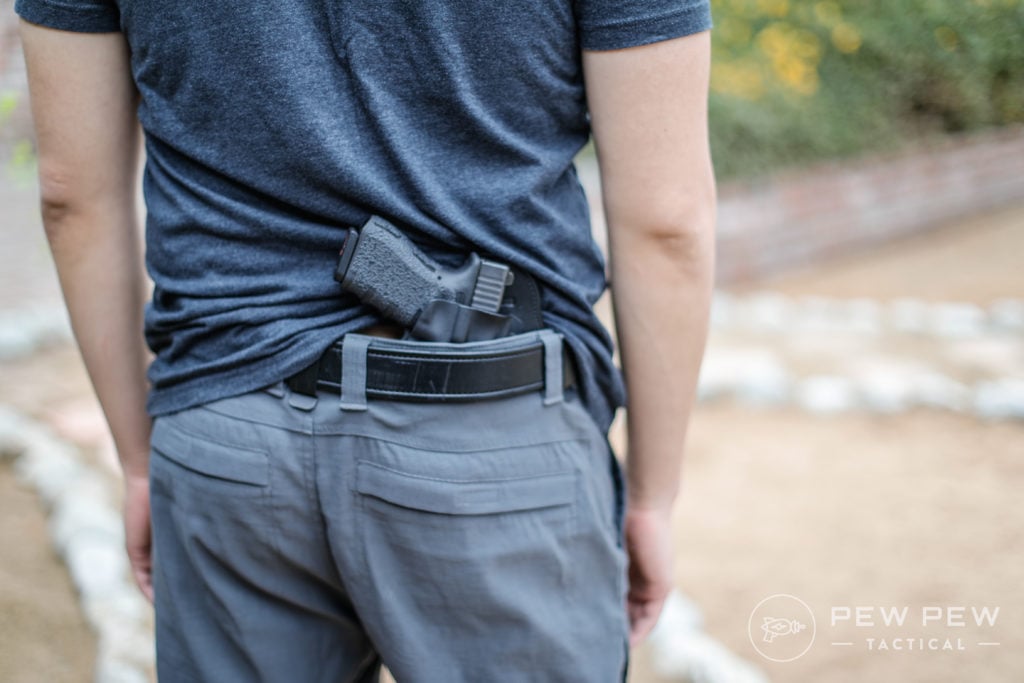
Or are you traveling for work and want to protect yourself no matter where you are?
For me, I like to camp and backpack. Some of the areas I camp are prone to bears and other big things that might try to eat me.

My motivation to get my concealed carry permit was to carry my Glock 27 when I wanted to enjoy nature without becoming an intimate part of the local food chain.
That changed when I actually took the course and had the permission of the great state of Wisconsin to concealed carry.
Below are some situations you might not have thought of that you should definitely keep in mind if you are thinking about getting your concealed carry permit.
Table of Contents
Loading…
Things I Wish I knew Before I Carried Concealed
1. Feeling Like Everyone is Looking at You
When you legally carry your for the first time, you’re going to feel like everyone is looking at you.
Remember that big zit you had in high school and everyone was looking at you? Yeah, it’s not that bad, but it’s the same sort of feeling.
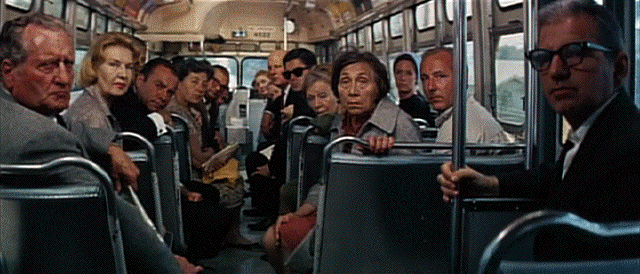
You’ll realize almost everyone doesn’t know. However, you will have to modify some of the ways you do things depending on where your holster is.
For example, if you carry your gun at the 4 or 5 O’Clock position (behind your right hip), your gun may print (how the outline or imprint of your weapon) when you bend over to get something off the bottom shelf at the grocery store.
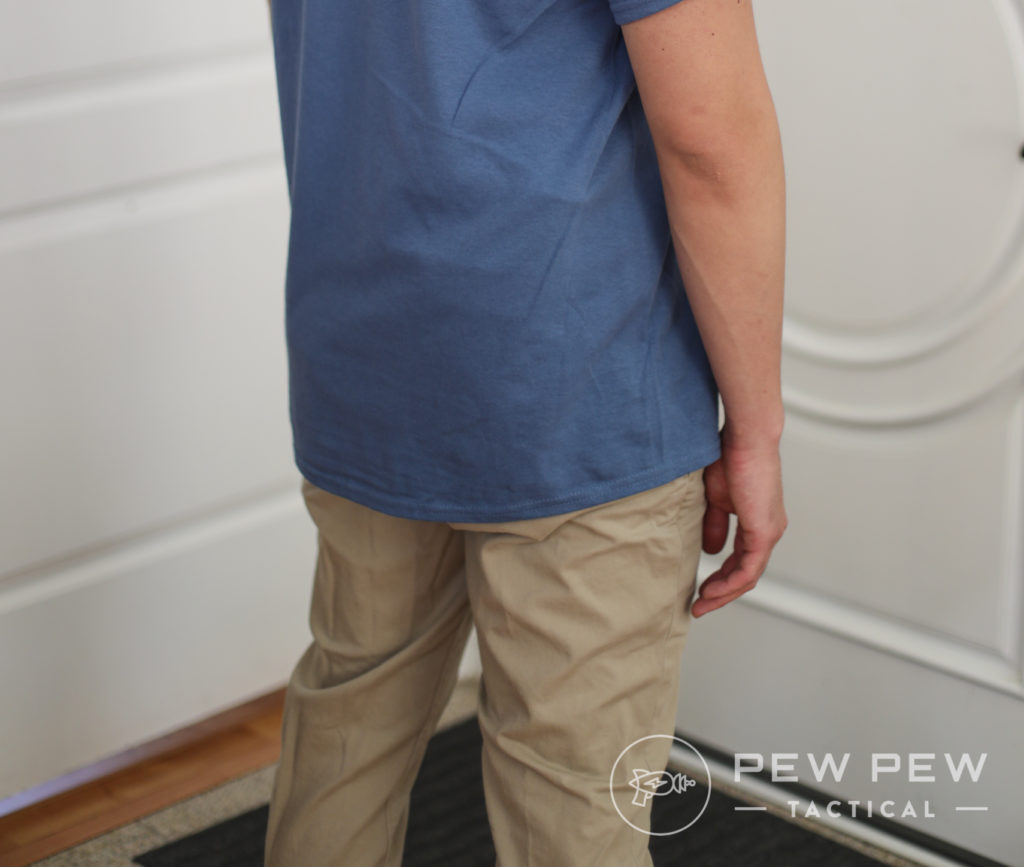
To remedy this, you can either stop buying the cheap cereal in the bags on the bottom shelf and get real Fruit Loops, or you can squat with your back straighter to minimize the bulge.

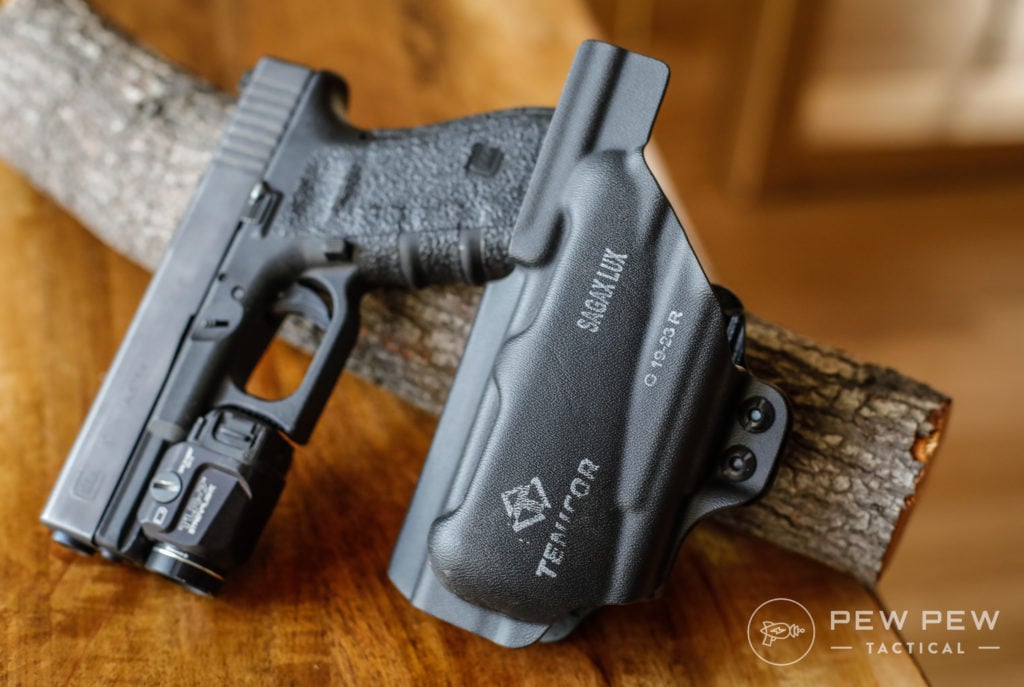
Or check out our Best Holsters Any Way You Carry article to get the least printing one possible.
2. The Responsibility
This may seem like a given, but now situations require you to have a zen-like calm about you.
Think about those times you’ve been cut off when driving and your blood pressure skyrockets. If you get into an argument and someone sees you have a gun, they could feel threatened.

You can’t flash your gun to win an argument.
If you remove your gun from your holster, you need to genuinely fear for your life. It needs to be a scenario where it’s a you or them outcome.
If it’s not, there are other consequences you may face like assault with a deadly weapon, or at a minimum, brandishing a firearm.
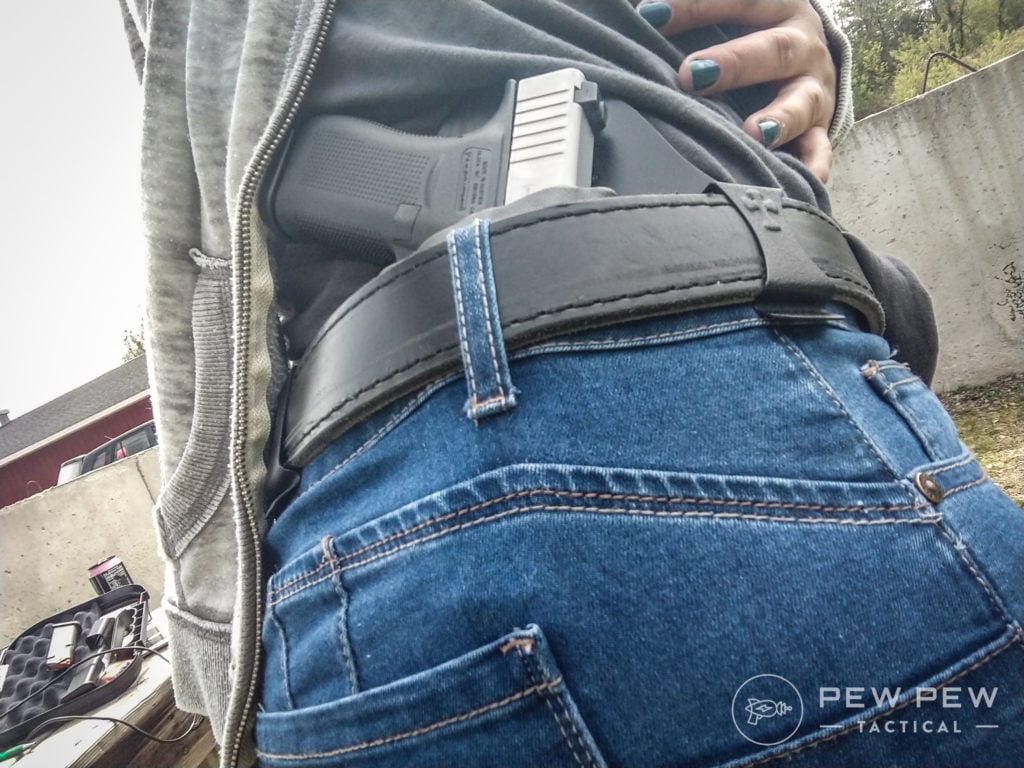
Neither of these are things you don’t want to deal with, ever.
One way to get SOME piece of mind is with CCW insurance. It’s one of those things you’ll really wish you had if you ever have to use your weapon…even if it was a righteous shoot you’re still going to need help.
3. All of the Places You Can’t Go When You are Carrying
When you aren’t carrying a weapon, you can pretty much go anywhere you want. When carrying, you need to be a little more cautious. Those no gun signs are your Kryptonite.
You will learn pretty quickly there are a lot of places with a no gun policy.
It all depends on your local laws, so make sure to check those out — you can start with our guide to CCW Laws For Every State.
Depending on where you live, a religious building like a church, any state or federal building, pretty much any place that has anything that has to do with children, movie theaters, a lot of stores, bars, and event venues are all no-go places when you legally have a gun on your person.
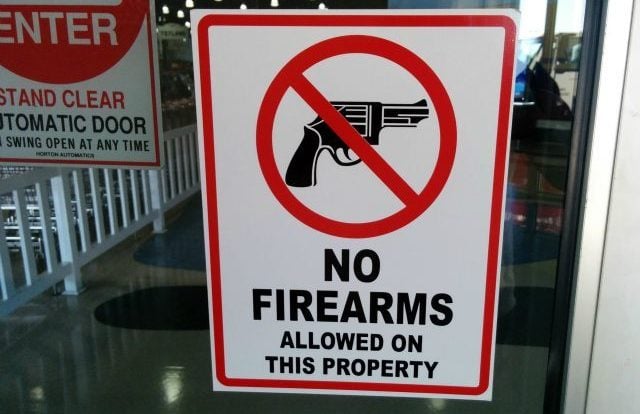
Some states have laws like, if a business makes more than 50% of their business from alcohol on any given day, then it is illegal to carry inside the building.
Situations like that are tricky and you’ll need to use your best judgment. It’s not like you’re going peek your head in the door to ask the owner to see his books for the last year so you know whether you can bring your gun inside.
You need to err on the side of caution; avoid the business or don’t carry inside.
4. What Do I Do With My Gun When I Can’t Take Inside a Store With Me?
This happens a lot. You’re out running errands, and you come to a store with a no guns allowed sign on the door.
What do you do?
You have a few options.
First, you can choose another establishment. As you can tell by watching the news, spineless bad guys love to target gun-free zones.
Going inside leaves you unable to protect yourself.
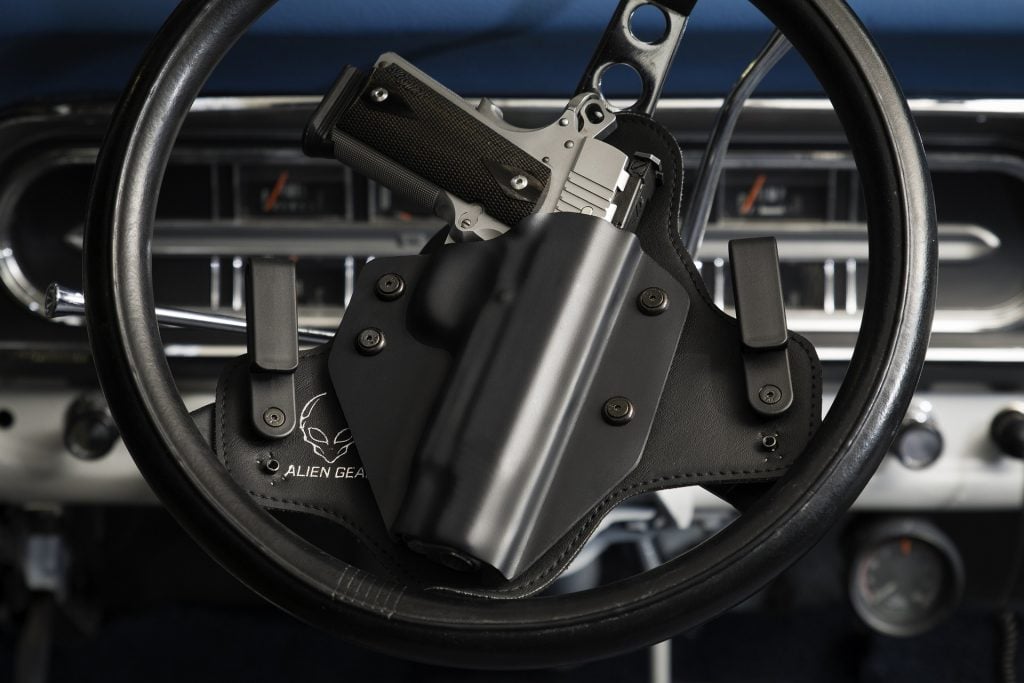
The second option is to lock your gun in the car. This is the go-to option most of the time because, unless someone who wants to steal your gun knows you have it in the car, it should be secure.
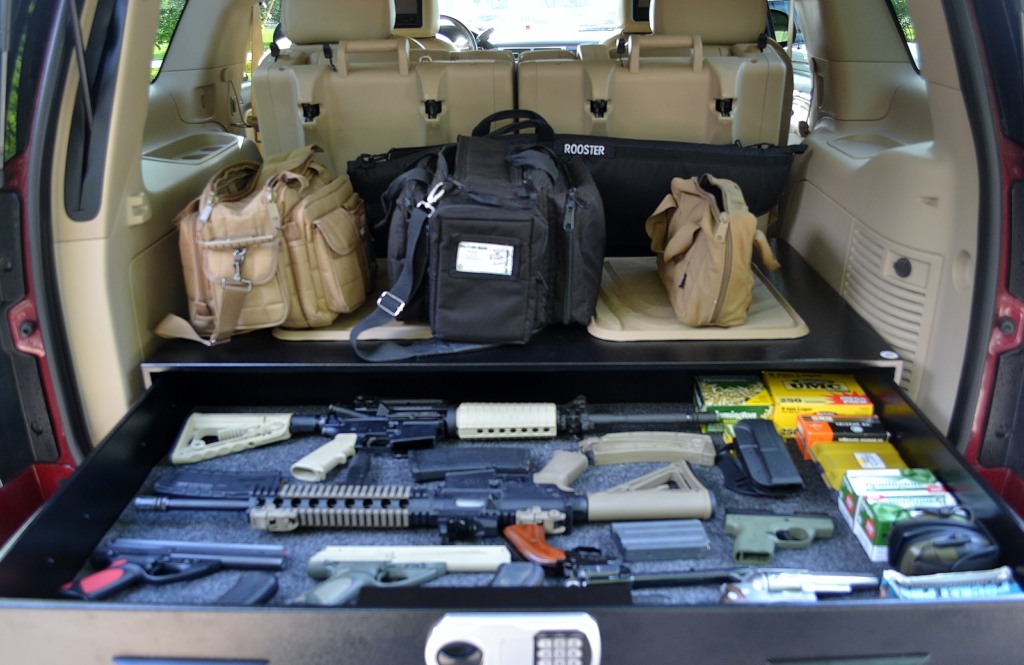
Making sure your weapon is secure in your vehicle isn’t as easy.
Sure you can put it in your glove compartment or center console. But more and more, car manufacturers are removing the locks.
A good alternative would be a personal safe that installs in your vehicle. You’ll have a metal structure with a lock and peace of mind for the times you can’t take your gun with you.
The third choice is not to bring your weapon with you if you know you can’t have it on your person.
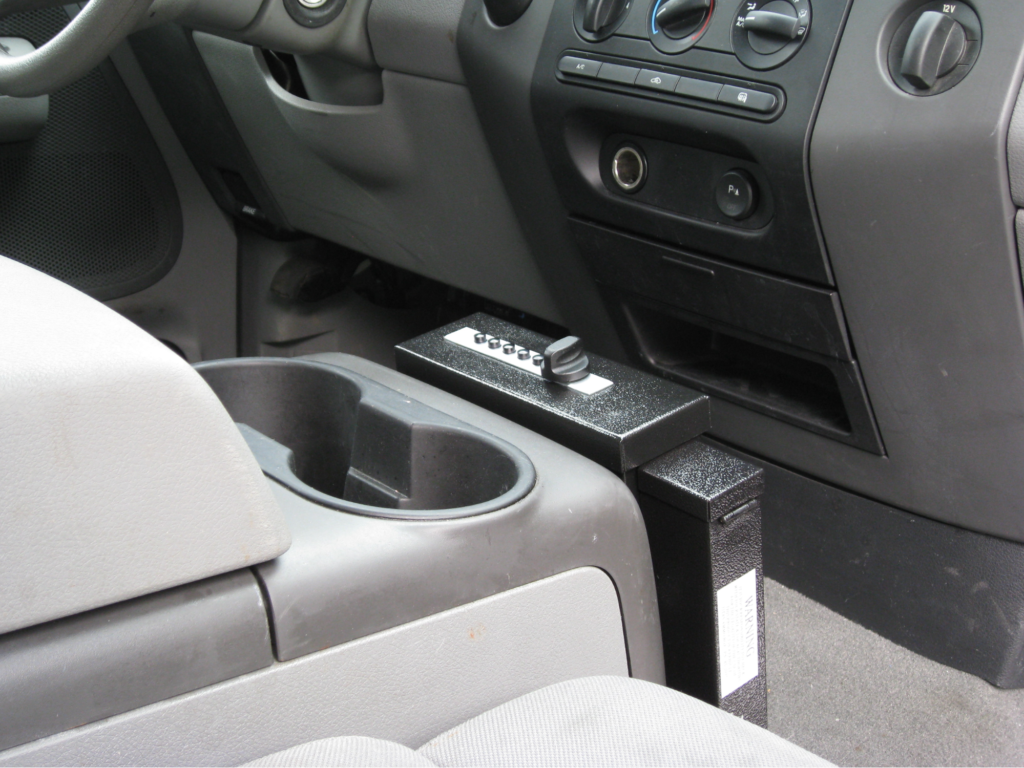
If you’re taking your kids to the waterpark, it’s a pretty good bet you can’t carry it with you. Situations like these put you in a predicament where you need to decide whether to take it with you when you leave the house or not.
5. Reciprocity
One thing I did look into before I took my CCW class was where my Wisconsin permit would be valid.
What I found out was, if I go to Minnesota, they do not accept my state’s permit, and therefore I can’t carry there.
In this situation, you have a couple of choices. If you frequent a state, you can get get a permit for that state.
Some states offer non-resident CCW permits. The other option is to take the class for a Utah non-resident permit. Utah, if you didn’t know has one of the most widely accepted concealed carry permits.
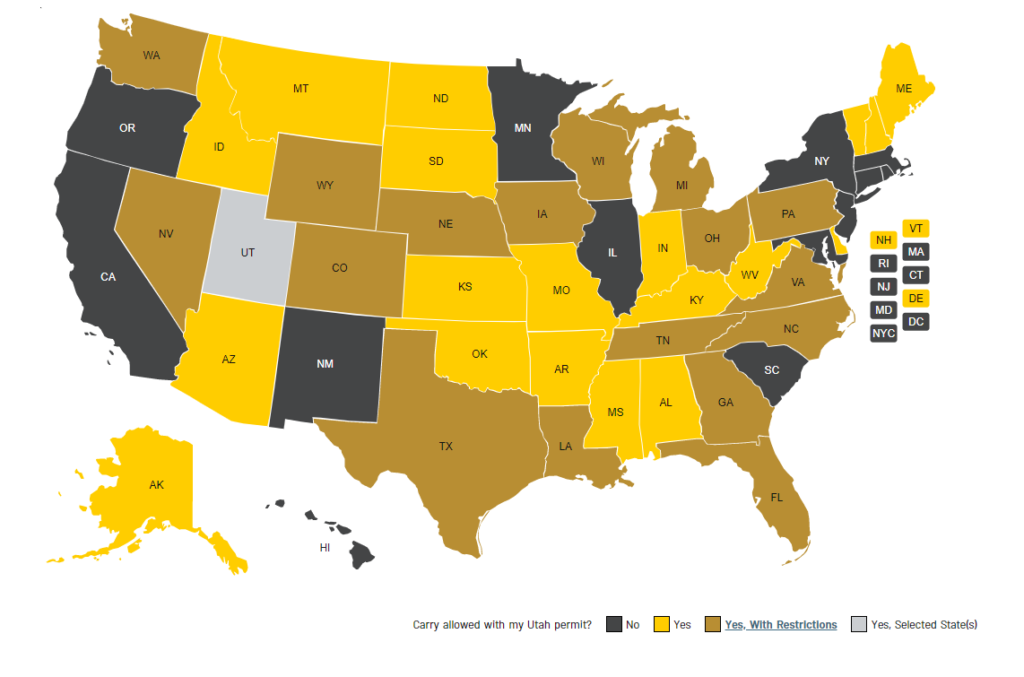
If you decide to go the route of a Utah non-resident permit, keep an eye on which states accept it.
There are many easy to use reciprocity maps to help you check which states accept your state’s permit.
6. How Much of a Pain It Is to Travel
Traveling while carrying, at least initially, adds some inconvenience to your trip. Most states allow you to keep your weapon on you while you drive as long as you stay in the vehicle.
Others require you to have it locked up and unloaded.
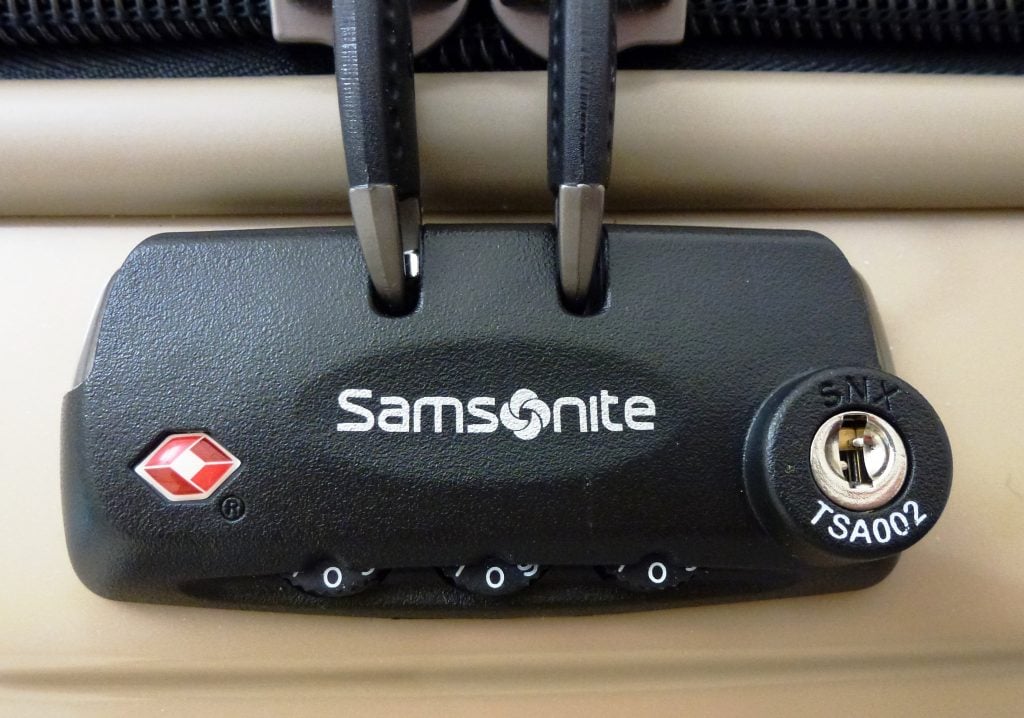
Make sure you know the transportation rules of the State’s you are driving through. It will help you avoid incident if you have an unexpected meeting with law enforcement.
You won’t have to rely on the “I didn’t know that wasn’t legal here, it is in my State.” plea.
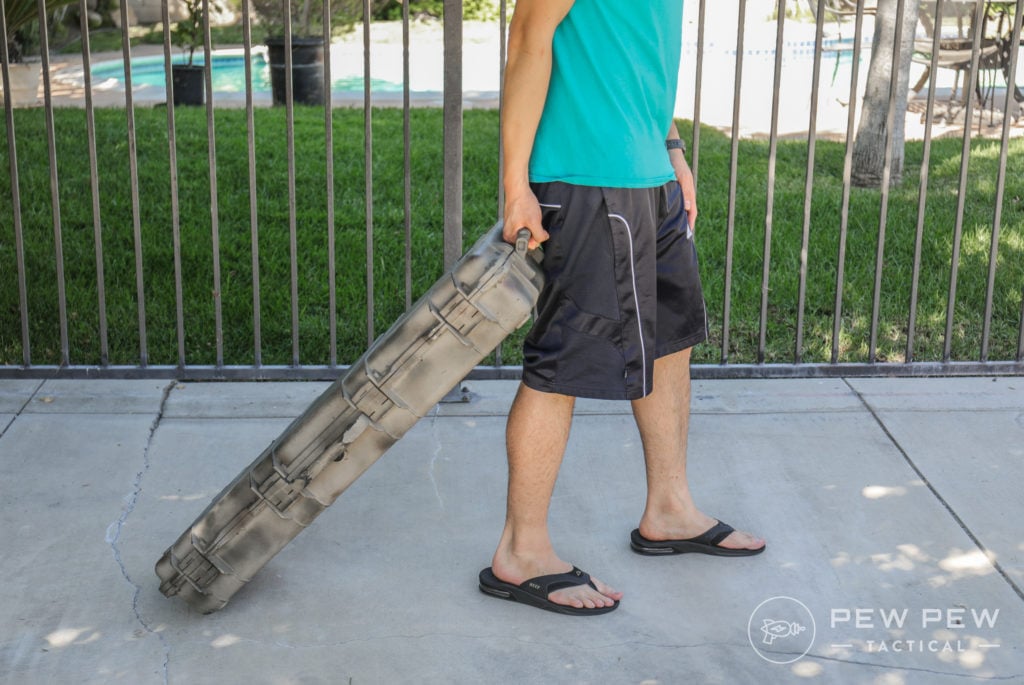
These days, flying is the worst. Take an inconvenient situation and make it more time consuming… no thank you. The TSA has been a little better with things like guns on a plane. Follow some simple TSA rules for flying with a gun.
No matter how you travel, when you don’t have your gun on you, make sure it is in a hard sided case with a lock that only you have the key to (No TSA locks!).
Check out our Best Gun Cases for all our suggestions for both hard and soft cases.
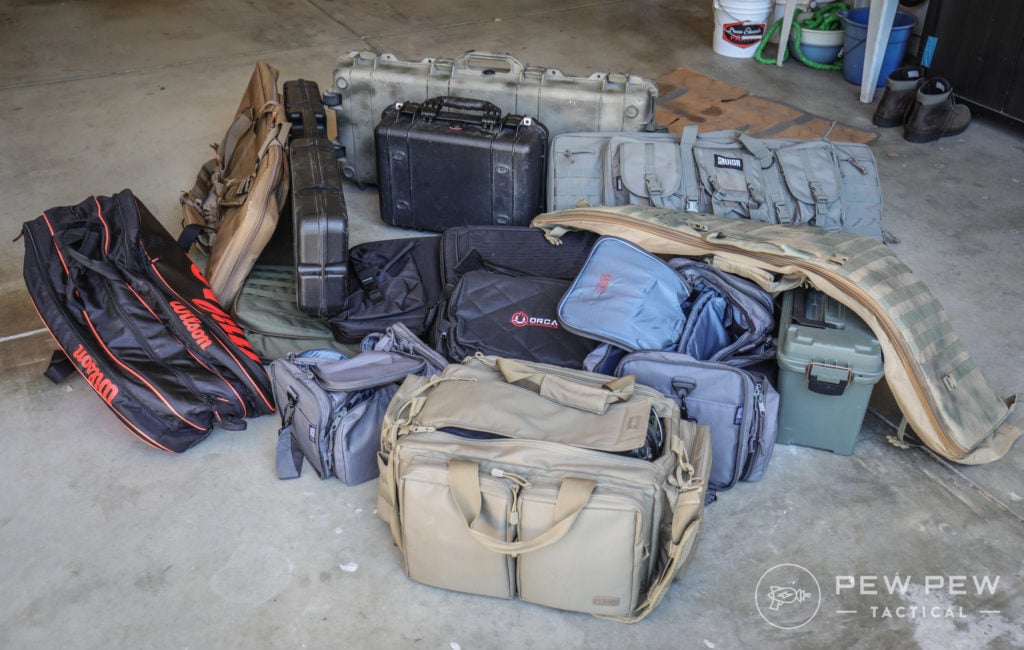
You don’t want someone to be able to pry the case open and slide your gun out.
That sort of defeats the purpose, right?
7. Training and Practice
While these are not mandatory, the thing is, if you aren’t an accurate shot or freeze when the time comes to defend your life, there is no real reason to carry a weapon.
A lot of sites talk about going to the range and practicing. The thing is, they have access to a really cool range with all sorts of equipment and targets.
Most people can’t train this way.
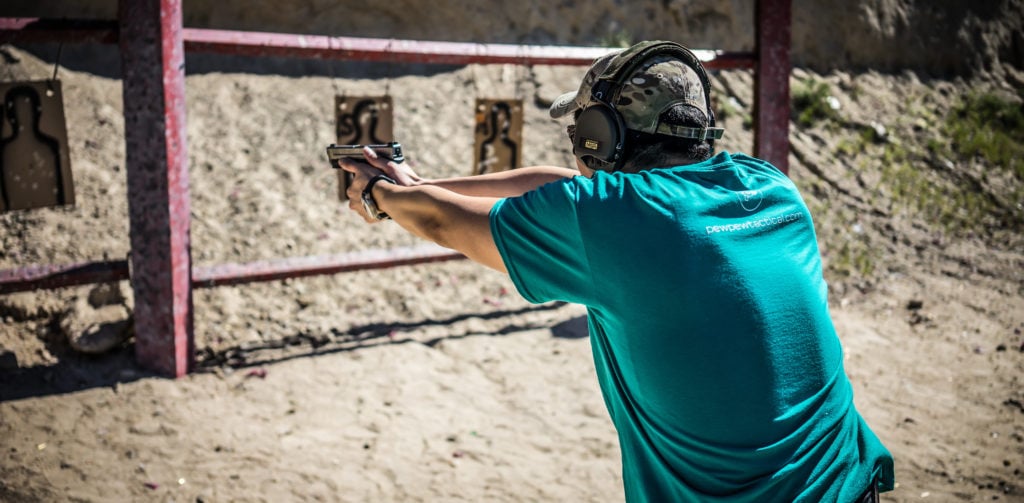
Most cities have an area where you can shoot. You may need to drive 30 minutes to get there, but you should be able to find one.
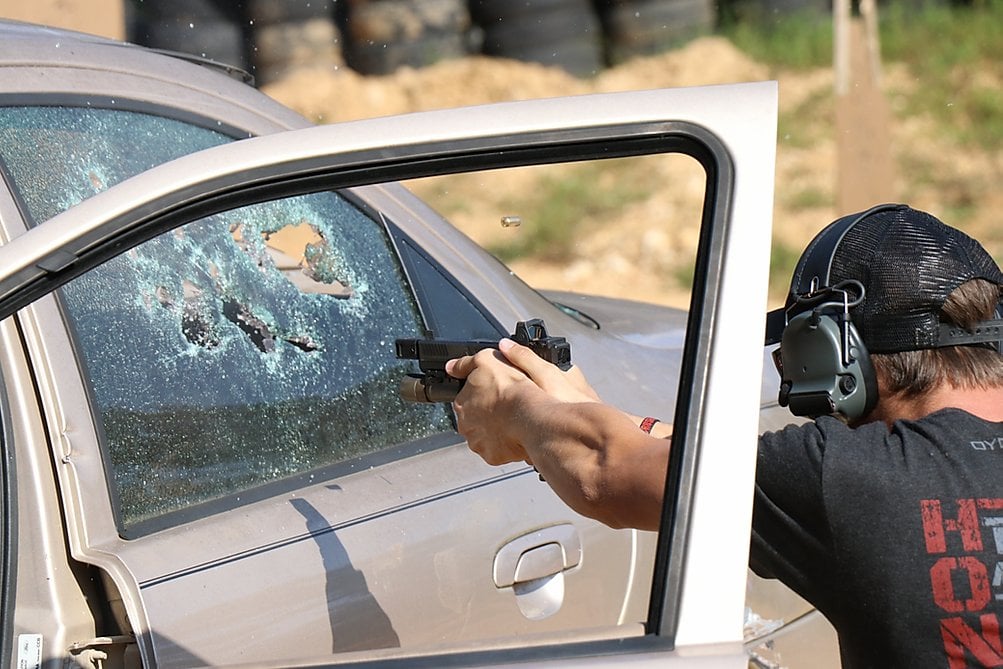
What you are trying to do is create good muscle memory. You want to be able to draw your gun from your holster and bring it to the exact same shooting position every time.
You need to do this over and over and over again. You can practice at home with Safe and Effective Dry-Fire Training.
Going to the range regularly will let you get a feel for your trigger, the recoil, reacquiring your target after you fire a round, and more. There is no real substitution for live-fire training.
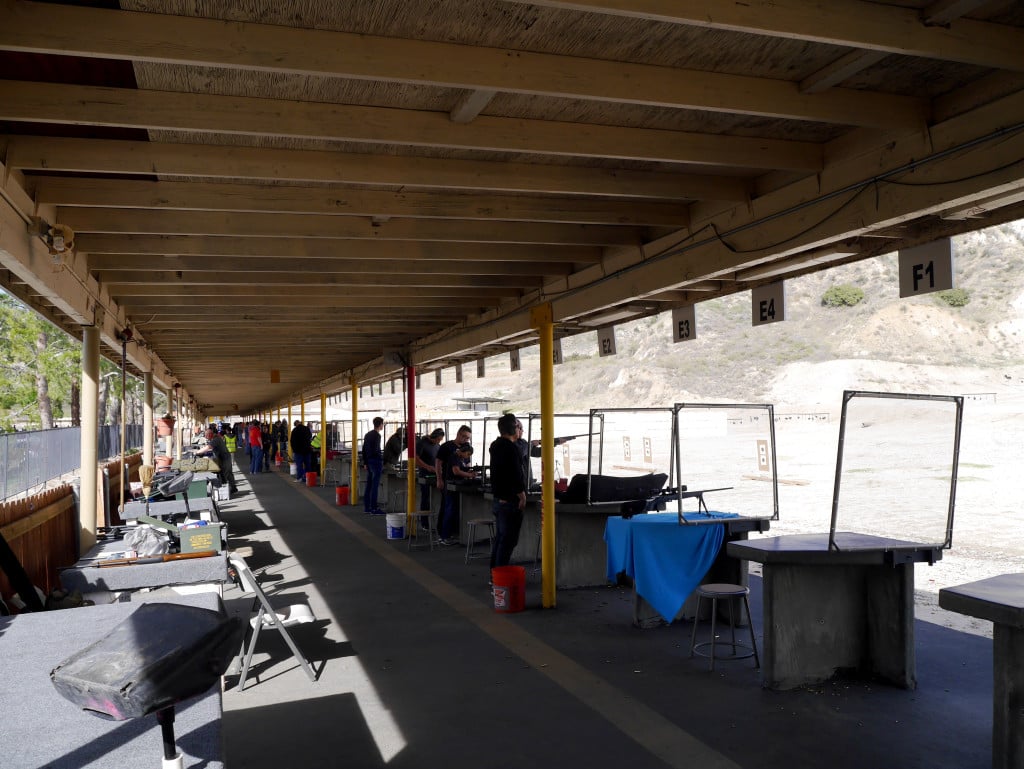
You might be one hell of a shot in video games, but it’s very different squeezing a real trigger.
The better you practice, the less you will need to think about it in the heat of the moment.
Be A Responsible Gun Owner
Overall, your life will change when you decide it’s time to exercise your right to bear arms and carry every day.
But if you do find yourself in a defensive gun use…do you have the right “concealed carry insurance?” I walk through why I chose USCCA for its education of how to prevent dangerous encounters, what to do during one, and the aftermath. Plus all memberships get personal liability insurance.
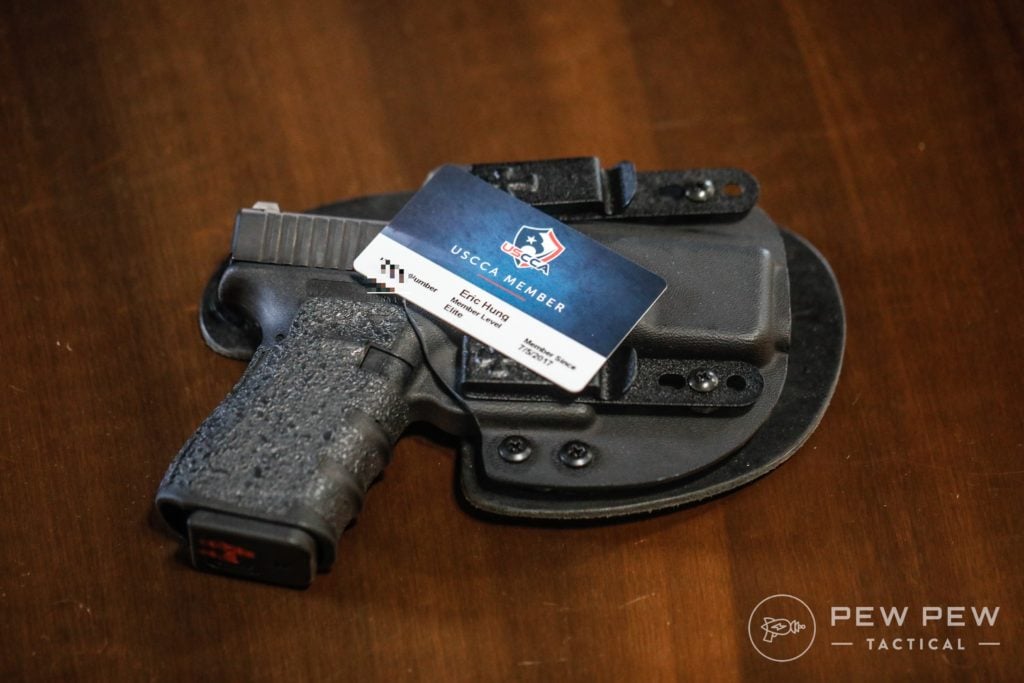
You will also find yourself being more observant and aware of your surroundings. You will also find yourself avoiding more potential drama than you did before you carried.
What were some things you found out after you started concealed carrying regularly? Check out even more CCW info in our Concealed Carry Guide page.

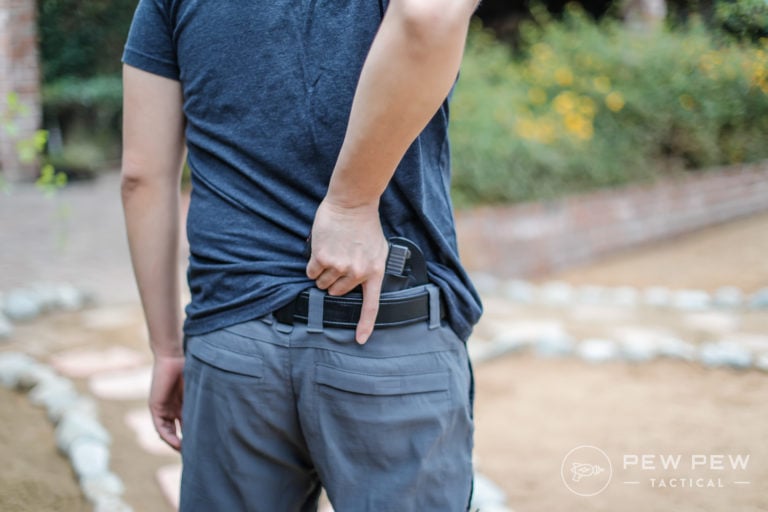
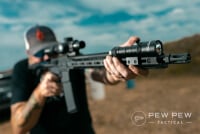






174 Leave a Reply
"...someone who ones how's to..." ? What form of English is that?
I always love how a troll will insult someone with spelling and grammar mistakes.
Stay in your own lane, Dave.
If you're going to a gun free zone, have strong pepper spray. In fact you should have that anyway because if your only tool is a hammer, you're more likely to use that than something that will keep you out of prison.
You're right about thinking everyone is looking at you. My first day carrying, I kept asking my wife, "Can you see it?" She kept telling me, "No."
As for locking your gun in your car, do that before you arrive. If you do that in the parking lot of your destination, someone might see you do it, then steal it when you go inside.
Reciprocity: Last summer, I had two possible routes to get to Indiana: Through Illinois, or through Tennesee and Kentucky. I chose the Tennesee/Kentucky route, because all states on that route are constitutional carry, whereas Illinois is a very gun-unfriendly state.
There are so many spelling and grammatical errors in this article, they need to hire a new editor or someone who ones how's to write in proper English!
Seriously? That is your comment? WOW! very helpful NOT.
Seriously..that is your comment about thie article. WOW NOT HELPFUL or informative. Are you an "English Teacher"?
Lol, no, although I seemed to get picked to proof read lots of docs etc. when I was in telecommunicationsfor 45y. It's OK, I see the same errors on major news organizations stories, pretty much everything you read on the net. It seems no one is really proofreading their content for some reason.
YO TEACHER, YOU WROTE "SOMEONE WHO ONES HOW'S TO WRITE". WHAT DOES THAT MEAN IN ENGLISH?
Oh and the double negative in the post turns a "don't want this" to a "want this"
YO ENGLISH TEACHER, YOU WROTE "SOMEONE WHO ONES HOW'S TO WRITE". WHAT DOES THAT MEAN IN ENGLISH?
Hi! I'm the editor-in-chief and I'm human. I edit a lot of articles here and sometimes I (or my team) miss a few things. Good news, we're not using AI here. All our content is written by humans who do tend to make a mistake a time or two. :) Thanks for reading!
"Neither of these things are things you don't want to deal with."
So, both of these things you want to deal with I guess
I really liked your article. I just moved from Florida to Nevada. Florida CCW is accepted in almost as many states as Utah. I had a CCW but it expired and I’m out of practice. I did 20 years in the Navy and was on the base auxiliary security force. I plan on getting my state CCW then start hitting the range again. I’ve never had it but I’m going to look into insurance. In today’s situation with all the whining and crying about their thug angels getting shot during an armed robbery one is going to need it.
I could do a whole blog here.
#1. Better to be caught with one, than without one.
#2. Trial by 12 is better than carried by 6.
#3 I am not gonna be the only one out here without one.
#4 Don't pull it out unless you're going to eliminate the threat 100%.
#5 DON'T buy into those gun show promos where, after a 30 minute class, you fire one round into a barrel of sand. That's red meat for the prosecution.
...Yeah, I was a LEO.
Do any concealed carriers ever train without "eyes and ears"?
Shooting with "eyes and ears" is so ingrained in so many shooters that there are shooters who have never heard the "EEEEEEEEEEEEEEEEEEEE!!!!" when you shoot without "eyes and ears".
May I suggest an eighth point?
Every bullet travels with three attorneys attached to it: your defender; a prosecuting attorney; and a judge.
It's a great article with loads of information. I too got my ccw later in life so I watch and read all that I can.
I look at shooting and conceal carry through a self-defense glass. However, there are always relatives of the bad guys who will not hesitate to sue whoever shot their poor Johnny, who would not normally hurt a fly! They claim this even when Johnny was caught on film robbing someone with a gun. Being righteous in a shoot may not protect you from being victimized in court.
I look at shooting and conceal carry through a self-defense glass. However, there are always relatives of the bad guys who will not hesitate to sue whoever shot their poor Johnny, who would not normally hurt a fly! They claim this even when Johnny was caught on film robbing someone with a gun. Being righteous in a shoot may not protect you from being victimized in court.
I look at shooting and conceal carry through a self-defense glass. However, there are always relatives of the bad guys who will not hesitate to sue whoever shot their poor Johnny, who would not normally hurt a fly! They claim this even when Johnny was caught on film robbing someone with a gun. Being righteous in a shoot may not protect you from being victimized in court.
One thing I will tell you Trevor. TSA has a key to every lock. Unless you have a custom made lock, they can and will open your case and mess with your stuff. I know this from personal experience. They have never damaged anything important, but just re-arranged things. The lesson I learned is that all locks are TSA locks.
I travel with my guns regularly, TSA always asks for my keys to open my pelican case. My locks are standard run of the mill “master” locks available everywhere. I have also SIDA badge privileges and can attest that your claim is false.
Are you bringing your gun to your seat or is it in checked luggage?
And how is he supposed to do that have you never flown before?
TSA's own rules forbid their staff from taking your keys and opening your inside lock box. If they feel the need to examine your gun, they are supposed to have YOU open the box for them, and SHOW them the condition of the gun.
Yeah right TSA has a key to every lock in the world, sorry but that’s a ridiculous claim.
Thanks for the great article, still contemplating getting ccl, definitely a big responsibility, mostly wanted for hiking however reciprocity definitely needs to be known , also the zen thing is great advice as I have so many times almost gotten into a fistfight and realize can't be doing that either , damn !
Good article on conceal carry. I have experienced all of the points. I just went through a rather extensive and lengthy process to get a permit in NJ. I had one in the past in PA. I think my most valuable learning is range shooting is not tactical shooting. You really need to practice holster draws and mag changes, your life may depend on it. Also remember most most LEOs never draw their weapons during their career. There are many things that can be read into that last sentence. I see it as a reminder, if you are smart you can avoid the need for deadly force. We all know it is reserved for when you have no other option. I am grateful I have that option. The State kept it from me for 6 years. I will retain my permit for the obvious one but also to tell the State leave my rights alone.
I have a .454 Alaskan...is there a good "dot" that doesn't stick up too far and won't get misaligned by the recoil?
I grew up around guns, hunting, and safety. We took gun safety, survival, and shooting classes in jr high in Oregon (1988). I think this is a great guide for people thinking of getting a permit. Do I really need one or I just want to look cool. Also people who have permits to be reminded of their responsibility. 1 other thing, if you have kid(s) you will not be carrying as often with them around. I like having the ability to do so, but I hardly do. But that is me, thank you for this article Trevor.
Seems strange to me that when someone attempts to provide GOOD general information there are so many nit pickers scurry out of the woodwork to tell you what you missed or what does not apply to one issue or another. Thanks for your articles.
Thanks for reading!
I’m guessing you live in the state of Wisconsin as well as I do. I find some of your statements not accurate at least not in Wisconsin. It doesn’t matter if there are 100 no gun signs on the door of a establishment. If you decide to go in the most that can happen is you would get a trespassing ticket and that’s only if you refuse to leave after being asked. You can even go into a bank in the state of Wisconsin with a gun if you choose. Federal buildings and bars are pretty much of limits. You should look into joining Delta defense to get more accurate information.
Logic and the law-HUH? You can buy a pistol on line and have it shipped to an FFL. The seller will ship it by say PRIORITY MAIL. The postal carrier will likely with out a concealed carry permit, thorough several states, likely braking laws but it is OK-HUH?
What if the sky falls?
definitely weird....but US postal workers ARE federal Employees...maybe they're exempt, lol.
Eric, I checked some of the states offering nonresident Concealed Carry Permits and was surprised to find out that Idaho has reciprocity with more states than Utah, including your neighbor Minnesota.
funny that Utah and SC aren't buddies....I'll check Idaho lol
I believe the privately posted “No weapons policy” is probably a state by state thing. Check your local laws before testing it. A few years ago Starbucks tried to impose a no weapons policy in the State of Washington, which is an open carry state. The local gun owners turned out in mass and that store ended up totally packed with customers openly carrying a firearm on their hip, until Starbucks finally backed down and reversed their decision.
Only people who are incompetent to own a firearm sit around and pull the trigger expecting the gun not to go bang. Dry fire is training yourself to have a negligent discharge.
@owsley
Your comment confirms your incredible ignorance...
I suggest educating yourself as to what dry fire practice is all about and why it is an important part of overall training.
People practice dry fire to overcome a flinch while shooting. The first time they fire a live round the flinch comes back. Number one rule of gun safety, don't pull the trigger and expect the gun not to go boom Alex.
It appears, while you claim to know all about everyone, you do not know more than a few, if any, who dry fire practice, or why the do it.
I, never, dry fired my gun to overcome a habit of flinching. I have, on the other hand, done it to get used to the trigger of my gun, while, also, practicing acquiring the target.
AT ALL TIMES I hold a gun, I am aware of where it is pointing, and what or who would be in danger, if it went off.
Thanks Kelly, that's more like it, I thought. To overcome flinching? Maybe just a few newbies.
Donnie,
The first rule of gun safety "always assume a gun is loaded"!
1.5 rule "don't take gun classes from Donnie"!
Just because someone puts up a sign, doesn't make it a LAW...they can ask you to vacate the property, but (in most states) you're not violating the law if you still carry concealed onto private property with a 'no weapons' sign. I tell people that they can't take away my RIGHTS with a sign...LOL
People like you are why gun owners ('nuts') are looked on with distrust and generally unliked. What kind of jerk goes onto private property and then cries about the rules of the establishment?
If you tell me to take off my shoes when I come to your house and I refuse because "you don't get to tell me what to wear", and then track mud on your carpet, am _I_ the jerk for doing a thing you've asked me not to, or are YOU the jerk for 'infringing on my rights to step where I want, when I want". The answer is me. I'm the jerk. If I don't like your rules, I can choose to go somewhere else.
You don't know why they have the sign. Maybe the owner is a Vet with PTSD and seeing a gun is a major trigger. Maybe their dog is trained to attack anyone with a gun.
Your 'right' is to choose the establishment based on their rules.
When you have a 'Karen' moment because you chose to break their rules, you make us ALL look bad and make people MORE likely to pass gun laws, not LESS likely.
I don't hat to say the obvious. You are WRONG! CCW may be legal with the exception of PRIVATE PROPERTY and Government Buildings. A restaurant, Post Office, Bank, grocery store, etc. can have a "NO WEAPONS" policy, with the exception of "Uniformed Law Enforcement."
They can have the policy, but it isn't a crime to ignor their policy in most states.
Gun-free business managers know they can call the cops and have you "trespassed." If you visit the store again, the manager may call the cops, and the cops may cite you. A citation will result in a court appearance. If you are found guilty it may affect your legal ability to carry concealed. Check your local laws before relying on any legal advice, including this.
I did check my local laws. Law enforcement can only request you to leave the premises. It is only if you refused to leave after being requested to leave by law enforcement that law enforcement can issue you a citation for trespass. It is that little thing about cops not having the legal authority to make a warrantless arrest (or issue a citation) for a misdemeanor unless the misdemeanor is committed in their presence. To give you a citation for a misdemeanor trespass on the business owners word that he told you to leave the police have to go to a judge and get a warrant.
I don't hat to say the obvious. You are WRONG! CCW may be legal with the exception of PRIVATE PROPERTY and Government Buildings. A restaurant, Post Office, Bank, grocery store, etc. can have a "NO WEAPONS" policy, with the exception of "Uniformed Law Enforcement."
I don't hat to say the obvious. You are WRONG! CCW may be legal with the exception of PRIVATE PROPERTY and Government Buildings. A restaurant, Post Office, Bank, grocery store, etc. can have a "NO WEAPONS" policy, with the exception of "Uniformed Law Enforcement."
I don't hat to say the obvious. You are WRONG! CCW may be legal with the exception of PRIVATE PROPERTY and Government Buildings. A restaurant, Post Office, Bank, grocery store, etc. can have a "NO WEAPONS" policy, with the exception of "Uniformed Law Enforcement."
I don't hat to say the obvious. You are WRONG! CCW may be legal with the exception of PRIVATE PROPERTY and Government Buildings. A restaurant, Post Office, Bank, grocery store, etc. can have a "NO WEAPONS" policy, with the exception of "Uniformed Law Enforcement."
I don't hat to say the obvious. You are WRONG! CCW may be legal with the exception of PRIVATE PROPERTY and Government Buildings. A restaurant, Post Office, Bank, grocery store, etc. can have a "NO WEAPONS" policy, with the exception of "Uniformed Law Enforcement."
I don't hat to say the obvious. You are WRONG! CCW may be legal with the exception of PRIVATE PROPERTY and Government Buildings. A restaurant, Post Office, Bank, grocery store, etc. can have a "NO WEAPONS" policy, with the exception of "Uniformed Law Enforcement."
I don't hat to say the obvious. You are WRONG! CCW may be legal with the exception of PRIVATE PROPERTY and Government Buildings. A restaurant, Post Office, Bank, grocery store, etc. can have a "NO WEAPONS" policy, with the exception of "Uniformed Law Enforcement."
I don't hat to say the obvious. You are WRONG! CCW may be legal with the exception of PRIVATE PROPERTY and Government Buildings. A restaurant, Post Office, Bank, grocery store, etc. can have a "NO WEAPONS" policy, with the exception of "Uniformed Law Enforcement."
I don't hat to say the obvious. You are WRONG! CCW may be legal with the exception of PRIVATE PROPERTY and Government Buildings. A restaurant, Post Office, Bank, grocery store, etc. can have a "NO WEAPONS" policy, with the exception of "Uniformed Law Enforcement."
I don't hat to say the obvious. You are WRONG! CCW may be legal with the exception of PRIVATE PROPERTY and Government Buildings. A restaurant, Post Office, Bank, grocery store, etc. can have a "NO WEAPONS" policy, with the exception of "Uniformed Law Enforcement."
I don't hat to say the obvious. You are WRONG! CCW may be legal with the exception of PRIVATE PROPERTY and Government Buildings. A restaurant, Post Office, Bank, grocery store, etc. can have a "NO WEAPONS" policy, with the exception of "Uniformed Law Enforcement."
I don't hat to say the obvious. You are WRONG! CCW may be legal with the exception of PRIVATE PROPERTY and Government Buildings. A restaurant, Post Office, Bank, grocery store, etc. can have a "NO WEAPONS" policy, with the exception of "Uniformed Law Enforcement."
I don't hat to say the obvious. You are WRONG! CCW may be legal with the exception of PRIVATE PROPERTY and Government Buildings. A restaurant, Post Office, Bank, grocery store, etc. can have a "NO WEAPONS" policy, with the exception of "Uniformed Law Enforcement."
I don't hat to say the obvious. You are WRONG! CCW may be legal with the exception of PRIVATE PROPERTY and Government Buildings. A restaurant, Post Office, Bank, grocery store, etc. can have a "NO WEAPONS" policy, with the exception of "Uniformed Law Enforcement."
I don't hat to say the obvious. You are WRONG! CCW may be legal with the exception of PRIVATE PROPERTY and Government Buildings. A restaurant, Post Office, Bank, grocery store, etc. can have a "NO WEAPONS" policy, with the exception of "Uniformed Law Enforcement."
I don't hat to say the obvious. You are WRONG! CCW may be legal with the exception of PRIVATE PROPERTY and Government Buildings. A restaurant, Post Office, Bank, grocery store, etc. can have a "NO WEAPONS" policy, with the exception of "Uniformed Law Enforcement."
I don't hat to say the obvious. You are WRONG! CCW may be legal with the exception of PRIVATE PROPERTY and Government Buildings. A restaurant, Post Office, Bank, grocery store, etc. can have a "NO WEAPONS" policy, with the exception of "Uniformed Law Enforcement."
Best approach: Boycott these traitor businesses and tell everyone you know to do the same. It is time that those disloyal to America are punished with the pocketbook being a great way to proceed. If you have money, open a competing business right next to them and undersell them.
One thing I found after I started concealed carrying is to continually monitor the background, so if the need to shoot arises, I will be aware of the possible collateral injury or damage.
In Alabama Properties that display a No Gun sign do not have the force of law unless that property is specifically mentioned in the State Law as being off limits to permit holders. If you are asked to leave a property then you must leave. Refusing is breaking the law and you can be charged.
A weapon cannot be "open carry" in a vehicle without an Alabama Pistol Permit. The restricted places listed for carrying concealed apply to open carries as well. The minimum age to Open Carry in Alabama is 18. Local authorities cannot have laws or ordinances against open carry since the state preempts all firearm laws in the state.
Great article - your articles are all so true and they are to understand. Pew-Pew Tactical is one of my favorite reads.
I was taught that a “no Guns Allowed” sign was not enough. In Texas the sign must be at the door, 1 inch high contrast letters, and cite the legal code on the sign.
Hiking/camping the Appalachia’s trail?
good article, many newbies that are rushing out to get a hand gun for the first time in their lives dont know many of these things.
good article, many newbies that are rushing out to get a hand gun for the first time in their lives dont know many of these things.
This old guy is concerned/curious. Are your fingernails really painted?
Re: The picture of your holster: "The G48 is highly concealable .... "
I know you young kids have different things going on, but really?
The picture is of Kat carrying her G48. She does at times paint her finger nails. As do many other of our writers and editors.
I hear you. I looked again and I think it may be a female. Judging by a second look at the hand and the hips.
Sooooo, people really don’t know/research these things before carrying concealed? I see nothing on that list that I WISH I knew before carrying. ALL OF that seems pretty much the basics.
Some people are getting into the concept of CC. This is a good primer for them. Not everyone approaches learning the same way. It's always a good idea to keep that in mind...
I normally carry a .40. but if there is a "NO GUNS" sign, I leave it under my seat and carry a .22 Magnum in my pants pocket which is completely hidden. I would rather face a judge and jury than have some idiot make my wife a widow.
When I see a "no guns" sign, I say to myself, the sign is wrong.
I carry a Browning 1911 380 as my carry gun. I rarely go out with out it, even when I am open carrying my 1911 45. As for the ‘no weapons policy’ seems like ever establishment has a ‘different‘ definition of the law. It can make your head spin… in my experience , small town cops (of whatever kind) tend to be more relaxed with concealed carry. The bigger the town, the less cops are apt to just ask you to leave. As a general rule, I carry every where but airports and court here in Nevada. I just don’t go around advertising that fact.
"avoid the business or don’t carry inside." Avoid the business whether you're carrying or not. Stay the hell out of victim disarmament, felon free-fire zones.
Good article
Well, I just got my CA CCW permit. I carried when I lived in MI. You know the rules and laws that apply in one state pretty much apply in all of them, the only difference is that the laws may be worded differently. These things are pretty much universal. Churches schools federal and state buildings, casinos bars etc. So why the dragging feet for universal reciprocity? It really blows my mind how the leftist-liberal tards want control so badly they lie every chance they get. I am a democrat, and have 9 guns here in Commiefornia. I just recently got a couple of Uncle Mike holsters for 2 my carry guns. Well about a week after I got my permit I went for a walk in my neighborhood. I holstered up and put on my running shoes. I was gone about an hour and returned. I go to untie my shows and I hear the clunk of disaster. The holster(I use the term in an academic sense; it does hold my firearm) allowed the gun to fall out and hit the floor. I don't carry with a chambered round. Next DAY, I go to UPS and ACE hardware. No problems. Get home, I have my backpack slung over my shoulder. I un-sling and whip it in front of me from behind. In that motion, the backpack knocks the gun out of the holster hitting the ground again. Loaded no round in the chamber. Lucky me. The problem stems from the fact that Uncle Mike didn't design this holster properly. A holster needs to do a few things otherwise it is just a waste of money.What I look for in a holster is, quality(how is it made), Material(Kydex(popular now), neoprene, leather), fit(is the gun too big or too small), function(does the holster hold the gun), retention(does the holster hold the gun and release the gun when I need it to), printing(can you see me carry a gun with my garments covering it), comfort(do I notice that I have a holster with a gun sticking in it in my pants, or not, do I feel it), and practicality(must I adjust the position from 4:00 oclock to 3:00 oclock before I climb into the driver's seat and will someone see it). I thought about price but after the incidents, I rethought that requirement because it would do me no good to spend less money for something that doesn't work. In the real world I can't in good conscience recommend the Uncle Mike holsters. I have three and none work as advertised. I have one IWB for my .380, IWB for Glock 17(close), universal shoulder holster, complete fail. They should have belt loops, not plastic clips that do not close all the way. This is a very dangerous choice. Had I carried with a round chambered, it would have gone off twice with the rounds going who knows where. Nice website! Troy Lawson
If you carry without a round in the chamber, you are carrying a hammer at best.
Hopefully, your weapon has a safety. If not, get rid of it and get a weapon that has a safety.
Wise up, chamber a round and use the safety when you carry.
In a live situation, to draw, then chamber a round will probably give you a trip to the morgue.
Tell that to Mossad. If you have to be a gun slinger to survive, you're not paying any attention to your surroundings.
Agreed. Although I carry a Browning 1911 380, I leave it on ‘half cock’. When I pull the pistol out of my trusty holster, I cock it and safety on (if need be). I learned that trick with a full size 1911 when I was in the Navy in the early ‘70’s. A 1st class gunners mate was a VERY good instructor…. Found out later he was a SEAL in disguise.
Dang I envy you. I also live in CA and the SB and SLO county realistically won't give out CCW unless you're LEO or have a dire need due to a convicted domestic abuser with multiple written reports that they specifically stated they wanted to kill you. It's ridiculous and even if you get one, it's only good for your county, not the entire state. I'm definitely jealous since these areas are pretty much telling "criminals, no opposition here!"
Just one question for you... why are you STILL a democrat? Your party has been hijacked.
“Neither of these are things you don’t want to deal with, ever.” This statement is a double negative which actually means “both of these are things you want to deal with, always”, although I don’t think that’s how you meant it.
Trevor- this one was an outstanding enlightenment for me! May GOD, as well as USCCA bless our families forever(-and any other family member of the “tainted and desperate minds“ we now “walk amongst”, throughout our lifetime!
I would have to offer an argument or a third option about seeing a no-gun-allowed policy sign. For one, agreed, you should not carry your weapon if you are going to be consuming alcohol or going to a bar/restaurant where alcohol is served. However, as in here in Illinois there are no gun signs almost everywhere, it's bordeline absurd. But what is at risk if you carry your weapon into a department store that doesn't allow guns? If no one knows you have it (such is the point of CCW), then nothing and you maintained your safety. And if the rare chance occurs that it is discovered you carried? It's fine, and a progressive one at that for each time you "break their law." Conceal carry the right way, and you are all the more safer.
Here in Florida, the officer that ran my CCW course said if you're discovered with a weapon in a place with a no weapons sign, they should ask you to leave, and you'd better. Because if you don't you'll be arrested for trespass, AND commiting a crime while in possession of a weapon.
The trespassing part is true whether you have a gun or not (if they ask you to leave).
ALWAYS, if someone asks you to leave private property (yes, stores are private property) the best thing is to leave because you will always br in the wrong if you don’t.
Gary, this is my exact thought. It is a store policy, not a law. If my gun is safely shielded from prying eyes, why would I give up my protection?
Fellow Illinoisan here and you're absolutely right - signs on virtually every single storefront. My neophyte advice would be for you to be absolutely certain that you would NOT face legal action from local authorities in the event your CCW is discovered (particularly by some anti-gun libtard drops a dime on you and triggers a mass police arrival at the store - I wouldn't put it past any of those worms). I wouldn't be surprised if some localities here have specific ordinances that would result in hefty legal problems for you, including the loss of your permit. The whole magazine capacity thing is a perfect example, at least in C[r]ook County.
The Guns.com links in the email I just received from you do not work.
Thanks, we'll look into it!
For my .02, BULLETS. I used to carry a mix of hollow points, followed by solids, until I thought about shooting through my own house. My bedroom is at opposite end of the floor from my kids, and I realized any missed shots - or straight travel throughs, would risk a hit on my own. I researched and got the poly/metal blend for my concealed. Nothing would be worse than having to shoot, then realizing you clipped a bystander two aisles over after it passed through a perp. If you are truly worried about armor, realize if you have a piece and are involved in a shooting, hitting armor will knock a perp down, and likely give you enough time to move to point blank for a vital shot. If you happen to take a hit getting that close, well, better to risk your life engaging than the life of another from your stray (or through) shot. That's what we're carrying - deadly responsibility to protect others not able to protect themselves.
The saving grace of the “gun free signs” in Wisconsin is that if you’re caught it’s a $25 fine only. We do have soMe pretty decent laws regarding weapons, but reciprocity in MN is stupid and we should all be able to carry the same way everywhere. The toughest part of have is going to the bathroom. It’s tough to take a dump...
I hadn't considered that yet! I'm a woman, so anytime I go I have to pull my pants down! Ugh! That gun belt is stiff and awkward to deal with, and the gun is a bit heavy. I'm gonna have to hold it and wipe at the same time! lol
Place the gun on the back of the toilet
As my instructor said, 'Concealment starts with the lips.' Word
There are only two rules for OPSEC: 1) Never give out all of the information. 2) [REDACTED].
The biggest thing I tell people asking about conceal carry, is this. If you don't know if you could shoot someone...DON'T CARRY. You will only donate your weapon to the pool of illegal weapons out there and most likely die. I pray every morning I carry that I won't have to use my weapon, but if I do, please let my aim be true. I am always aware of my surroundings (even before I carried), but I am not paranoid and "looking" for trouble either. Be smart, stay calm, and practice drawing your weapon when at home so if you have to do so, it's second nature. I find myself much calmer in "risky" areas knowing I am better equipped to defend myself if problems arrive, rather than having to always be on the lookout for trouble for my personal safety. Don't be a cowboy, don't look for reasons to draw your weapon, but always be at the ready.
Trevor sounds like a mommas boy. He probably works and frequents gun free zones.
You forgot to mention bathrooms. For some unknown reason. I have found that some malls are not gun free but their bathrooms are posted. I have also walked into stores from the mall entrance and there is no sign, but later found out one (of three) entrances from the outside was posted. That also seems to make little sense.
Another is the law describing the correct size and placement of the 'no gun' sign. It is amazing how many places post the sign in the wrong spot or use the wrong size sign. I have seen a number of signs inside an establishment posted in places most patrons will not see them. In one new restaurant I asked the manager about it, he said he knew that, it was just there in case he needed it. What that means exactly, I do not know.
When one decides to take the responsibility to carry or even possess a firearm for self defense. They must realize in some places it is a major decision...Other places it just comes natural and is not a big deal.
I applaud and bow to those that have made the decision to be able to fight back.
Also those that have made the decision to carry must also make themselves very familiar with the Use of Deadly or Lethal Force in their state and community or where-ever the are carrying or will be carrying.
One should be able to find a copy at their local PD or Sheriff's office . I have read signed untold numbers of them ever time I went to the range in the Military or Civilian Life. From various handguns to the M-16/ M-203 to the M-60 to shotguns and numerous other weapons.
The Use of Deadly/ Lethal Force tells you explicitly when you can LEGALLY use Deadly/Lethal Force and AFTER ALL OTHER MEANS OF MINIMUM FORCE HAVE FAILED!
KNOWING and ABIDING by this policy can make the difference between you being cleared or you going to Prison.
Being able to carry in all 50 states is one thing.....Actually having to use your firearm in any state other than yours may have quite different laws. Some states may have the so called "CASTLE DOCTRINE" Law for example......Other states may require you to run away and only be allowed to use Deadly/Lethal after being cornered or some such. That is why you must familiarize and know that policy in the areas you travel to or through.
I would love to see the Use of Deadly/ Lethal Force covered in here and suggest you do so.
I know and realize selling the insurance is a sponsor and a good thing to have..................
BUT there is no excuse for people not educating themselves. Some have made the biggest decision in their entire lives and accepted the Responsibility to carry a firearm.
It would be sad to see them go to prison or sued because they did not know the Use of Force policy.
REMEMBER THIS: ALL WAYS USE THE MINIMUM/LEAST AMOUNT OF FORCE AS POSSIBLE ...BEFORE YOU DRAW AND USE OUR WEAPON! Even if that means Deadly/Lethal Force is your ONLY Option! NEVER shoot to kill! You shoot to STOP the Threat!
Aim for Center Mass gives one the greatest probability of a hit!
If you admit you shot to kill. Cancel Christmas....You are going to go to Court and most likely going to be convicted of Manslaughter as a minimum.
So I as again to please post articles on Use of Deadly/Lethal Force Policy for all 50 states and Districts that have the most restrictions on those that might have to use such Force.
“Center of mass” is not the most effective place to “stop” or incapacitate a threat. COM is a very large area. The thoracic cavity is ideal 8” area with sinus and or ocular vault, which is a much smaller target. Aim small miss small.
Actually, going back to your first point about knowing the laws in your area, depending on where you live, YOU ABSOLUTELY SHOULD SHOOT TO KILL. Every time you draw your firearm to defend yourself. And the reason for that is because it's very hard to prove that you feared for your life if you didn't try to kill the other guy, and there are many states where establishing self-defense requires that you prove that you feared for your life. It's stupid, but the resulting lawsuit that could be brought to bear potentially even by an intruder suing you after being shot by you (even though he clearly was the original bad actor/ initiator) could mean that you end up in jail instead of him if you only shoot to maim or to incapacitate (because he'll argue that he wasn't trying to kill you and that you knew that because you only shot for his leg or some other non-lethal area). Gotta know which way the law blows in your area.
You hit the nail right on the head Val! If you don't plan on killing someone when you pull your self protection then you can't really claim self protection. If you're not able to kill someone to save your life,then maybe you shouldn't even carry a firearm. It's a a life changing experience that you can't take back and it you can't do that then you shouldn't be able to carry a gun.
My dad, an Army combat vet, South Pacific, WW 2, was very plain in his teaching: 5 rules: 1) all guns are loaded, 2) never point your gun at something you aren’t going to shoot, 3) never shoot anything you don’t intend to kill, 4) never kill anything you don’t intend to eat and #5: never kill another person unless in defense of yourself or others. Pretty simple to follow….
Here in FL, "No Gun" signs at stores, churches, public places, restaurants ect.. are only requests. Not the law.
One thing to know is the rules for DC. Essentially, don't take a gun into the district. You can drive STRAIGHT THROUGH legally, but if you even stop for gas you are technically in violation no matter how the firearm is carried or concealed, even encased in concrete in the trunk, if they find it. Be warned!
That sounds over the top. Maybe it violates other constitutional protections in addition to the 2nd Amendment. Since it obviously regulates interstate commerce it may be invalid as infringing on the federal government's exclusive jurisdiction under the commerce clause. It may also violate a citizen's constitutional right to travel, a right found by SCOTUS at least as far back as the 1860's. In more recent times it was used to invalidate a California law requiring people moving there from out of state to wait a year before applying for welfare benefits.
"... do you have the right CCW Insurance? I walk through why I chose USCCA to protect my family and me. "
This would be the same USCCA that *favors* ERPOs? Um, no thanks!
"This would be the same USCCA that *favors* ERPOs? Um, no thanks!"
In the August 2017 edition of the USCCA official magazine, “Concealed Carry,” the company officially came out against “red flag” laws.
Read more: https://www.ammoland.com/2019/04/ussca-reaffirms-it-stance-against-red-flag-laws/#ixzz5s0ICJbtu
IF a store doesn't allow me & mine to go in ARMED? WE find another store, IMO?
great stuff thanks Im a newbie can you give some more tips please does and do nots
My biggest challenge was always unconciously adjusting clothing or making sure that my shirt was covering my IWB carry and so potentially giving it away. It's a little harder to conceal well in warmer states like Florida but worth the effort if you want to assume the considerable responsibility.
Unless you're carrying an N frame revolver or a Desert Eagle, a pocket holster is usually the best bet for hot, humid weather, followed by appendix carry. I routinely carry my 642 at the appendix position and have done with a full size 1911, but if you do so in Florida you'd better make sure the holster or gun is perspiration proof.
You make a good point of thinking ‘everyone knows’. A lot of large cities have PD’s actively involved in the interdiction of unlawfully carried weapons. The number one indicator for them, is that a person not confident in the carry of a weapon will continually ‘touch it’ to reassure themselves that they have it. A good holster and training will definitely help you avoid this rookie mistake. Good info, AND get the insurance!
To your question at the end, I am still surprised how more aware of my surroundings I became after I started carrying and I always know my exits. I also became picky when it comes to where I sit in a restaurant etc.
First Eric let me tell you your information is always educational. Second I have been carrying for a while and bigger is not better. Practice, practice, practice with your chosen weapon. Third your holster and belt make a big difference in comfort it can’t be lose that is when it will print.
Love this site and every article that I read. Y’all put a lot of important information out there-much respect to everyone who writes and moderates the site.
Thanks :D
Our writers thank you too!
This is a great article and is helpful since while I have my CC I don't actual carry in public. And currently it is a function of that 'muscle memory' you mentioned. I intend to become more proficient and this article was a positive boost.
Great article!!! Whether you chose to cc or not, a must read for anyone contemplating that step. Fair and to the point this article should give anyone an honest look at what cc is all about. Bravo!
enlightening and too the point, many want to cc but have not prepared physically and especially mentally for possible real confrontations
LOL - great article and spot on! Never thought of cc being the same as having a giant zit in high school, but yes - it really DID feel like that!
muy buenos articulos
Gracias, Luis!
Always find these articles very informative and relevant.
Very well presented and much needed information.
Hey guys just wanted to say thanks and I enjoy your articles. BTW, your email directing us to your article on 9mm carry guns, that came out yesterday 12/22/17 had a broken link.
Greg
You're so welcome Gregory!
Nice read on Guns permit to carry.
Thanks Denz!
Great article, and great comments, as usual.
This is the best gun blog I've found, by huge margin. It treats guns as a tool, which makes the most sense. There's virtually no attitude here, and that's almost unheard of in this genre of blog.
Keep up the stellar work, folks.
There is a really great CCW app (CCW-concealed carry 50 state) that gives reciprocity and law info for each state. It isn't free but is pretty cheap and a great reference tool. I learned about it while taking my class in Oklahoma.
Thanks Gaye, that should help out my readers!
One thing that also changes is the way FAMILY treats you; some will understand and just want information from you and others will actually shun you. Think twice about which ones you tell and which ones you just let find out if they can...
Ah, never thought about that!
My wife and 3 daughters and my three oldest grandchildren know, that's where it ends. I have told them that no one needs to know!
Johnathon Lewis,
Your comment is one that reflects an issue I have confronted (and which I wasn’t expecting) as such I think it is something that some folks may want to consider- before bumping into it, as I did. I was raised in a Midwest state, and began hunting / camping / fishing from a very young age. I had a .22 before I was 12. When I moved to the west coast I met my (future) wife, who was raised in a Southern California beach town by very liberal, intellectual parents. They were horrified to learn, in the course of a conversation several years after we met but before I married their daughter, that I’ve not only shot a firearm but actually *killed* an animal (they love to eat them but cannot abide by the notion of hunting) but own several guns. It became an issue where they tried to dissuade my wife from marrying me, because they felt anyone who owned a gun was a hazard to their ideas of safety and sanity. Eventually I was asked to either surrender my life long hunting love, or my other love, their daughter. I finally had an open conversation with her father where I explained I believe eating what I kill, and hunting with safety and environmental concern were not things I was prepared to give up to make them happy, and that I felt I was marrying my wife not them. This didn’t work well, but it drew a line in their attempts to undercut these elements of my life. Later, I was told by various members of her family that the subject hadn’t been limited to them and me, but that they had basically told everyone in her family about how they disapproved of the fact I ever was a hunter, and that I didn’t repent my evil ways. Fortunately, my marriage was not derailed and so far it’s been 19 years. Her folks still disapprove of my (much reduced) weekends hunting. I don’t think they’ll ever stop undermining this, but I cannot imagine the havoc I would have experienced if I had shown up with a concealed carry 9mm in the car or Lord forbid on my hip for Thanksgiving, for example. Food for thought.
I obtained my CCW in California (yes there are places where this is still possible!) as well as in Arizona, which allows me to carry in a number of other states. When I was first certified, I remember the feeling that everyone knew I was carrying and thus, I did the "gun check" often. Now that I have carried for awhile, I am much more comfortable with my weapon and I notice I am also much more of an observer of other people.
I'm so jelly! And glad that you felt more comfortable after you started carrying awhile.
How about planning your outfits around your EDC. This is a big one for me too, maybe more for a woman than a man.
Hi Heather, that's a great potential article. We're adding more stuff to our CCW section and we'll be sure to have something about planning outfits for both men and women.
I'm curious. What's so great about Wisconsin if you have to ask permission to carry your firearm concealed? I know, Minnesota isn't much better. Last I checked, Wisconsin has a good open carry policy.
I have lupus and after I got my CPL and started to carry, I was struck by how many well-meaning pieces of advice I had to ignore. A lot of gun owners and carriers will offer advice on where to carry, how to stand, how to hold your gun, how to store it when you aren't carrying but in the end; they're not you. Find what works for you and your specific situation (within the law). If you have a disability, you'll need to get creative about where you carry and make adaptations based on your individual needs. Then, as the author stated, practice - a lot!!!
Great insight from the disability front, Mariya!
In Alabama "no gun" signs have no force of law. You can walk right past them as long as you're concealed carry. If they see the gun they can ask you to leave. Only if you refuse does this become a problem and even then it's just simple trespass. There are also no laws restricting carrying in a church or state park, etc.
In my daughters state of New York they require a lot of jumping through hoops and in her area they have laws such as "you cannot shoot at a silhouette at the range". Seriously...a paper target silhouette is not ok. It boggles the mind.
Each state is so different (thankfully this still remains within the rights of the states) that one article really can't cover the bases for all.
Good points, I forget once to leave the gun home when I went to a concert and the detectors were in use. Had to walk about 4 blocks back to the car to disarm myself. Another is reaching for things on the top shelf, if your shirt lifts to much you will be exposed and high enough the shirt could hang up as well.
Glad you remembered! And good call on reaching for high things.
Great article! I have a CCP in my state and Utah. I went through some of the same processes. I can remember worrying about printing. I've carried my PPQ for about two years now, it's not a little gun but I modified my holsters fit lower behind my belt and for abdomen carry. I'm wearing mostly shorts and tee shirts, and even if there is some printing I realized that no one pays attention enough to care, not even the police, just act normal! I've gotten so comfortable wearing it, a good holster and belt helps, that honestly, when I'm out and about, I don't un holster it, and that's all I'm saying on that! It was my first striker fired weapon, so I think the first few weeks I carried without it being chambered but after putting 7500 rounds through it, i know it ain't gonna fire unless I pull the trigger so it's always ready to go! One last point, I have carry coverage with CCWSafe! I hope its is wasted money and I never need it!
Thanks so much for your experience, Rick!
A good after story: What happens after you have had to use your weapon that you carried legally
That's a good topic...we'll add it to our writing queue!
All really good points. It definitely makes you more aware of your surroundings. It's a huge responsibility and I wish the cpl class I took here in MI would've covered these real world scenario's more in depth. I'm now looking into some more advanced training. Great article!
Thanks Scott! We'll be adding a bunch more stuff in the CCW world soon.
I'm with ya! I just finished a class in Grand Rapids, Michigan, and my class was a complete JOKE! I am seriously worried that some people are getting their permit and know absolutely NOTHING about guns and/or have the basic training required to even hold and fire one. Our class met at someone's home out in the countryside, and we ended up firing .22 cal handguns to train with, which would not have been bad if we weren't shooting at hand drawn targets that were actual paper plates and they were even mounted on a crooked and torn up pallet that this guy had as a makeshift place to catch the rounds that we shot. The whole ordeal was just really bad and the instructor should be ashamed that he is taking people's money and just putting unprepared people out there like that. I really hope there will be some more firm rules of how and who can teach these classes and what needs to be taught to even be able to get your permit. This is only my opinion of course, but I really do hope things change for the better.
Oh wow, that sounds pretty terrible. I hope you let more people know around you through things like Yelp.
Great points made on the ccw. I've noticed almost all of these already, but only after I've found myself in the situation. Many if not all of these points were not discussed during class. I found myself confronting a driver that had clearly endangered my safety and I was ready to come unglued on him. Followed him and started to get out of my car to ask what he was thinking putting myself and my family at risk. I suddenly realized if things escalated, the fact I'm armed may be enough to land me in trouble. Also I still feel people can see me print, when in fact they would have to be trying to notice. All in all I like my ccw, but it doesn't come without some life adjustments. Be safe!
Hi Dave, thanks so much for sharing your experience...glad everything turned out ok!
"You will learn pretty quickly there are a lot of places with a no gun policy. A religious building like a church, any state or federal building, pretty much any place that has anything that has to do with children, movie theaters, a lot of stores, bars, and event venues are all no-go places when you legally have a gun on your person." Yes, learn where you can/can't carry in your state BUT (for example) in WA you can carry in a church, in a movie theater, most stores (but no bars) and some event venues. IF a place like a mall or store has a "no guns" sign, it doesn't make it illegal to carry there unless you are spotted and asked to leave but don't. Then it's a trespassing charge only. Concealed means concealed. BTW, you can carry in an Oregon bar, but not in a Washington bar or area of a restaurant off limits to minors. Check your state's laws!
Hi Steve, thanks for highlighting a couple of the intricate laws so our readers understand they really do need to check their individual state laws!